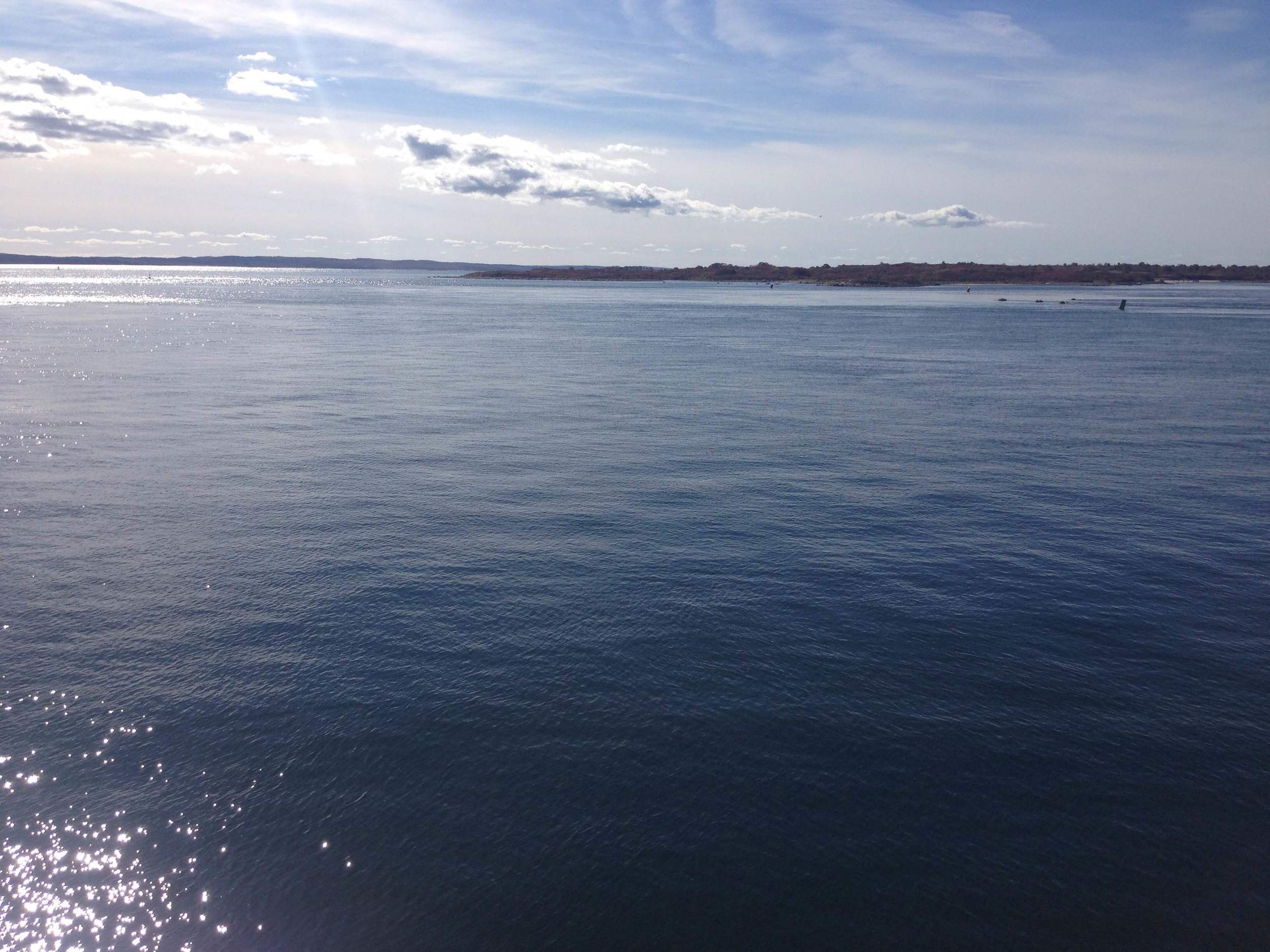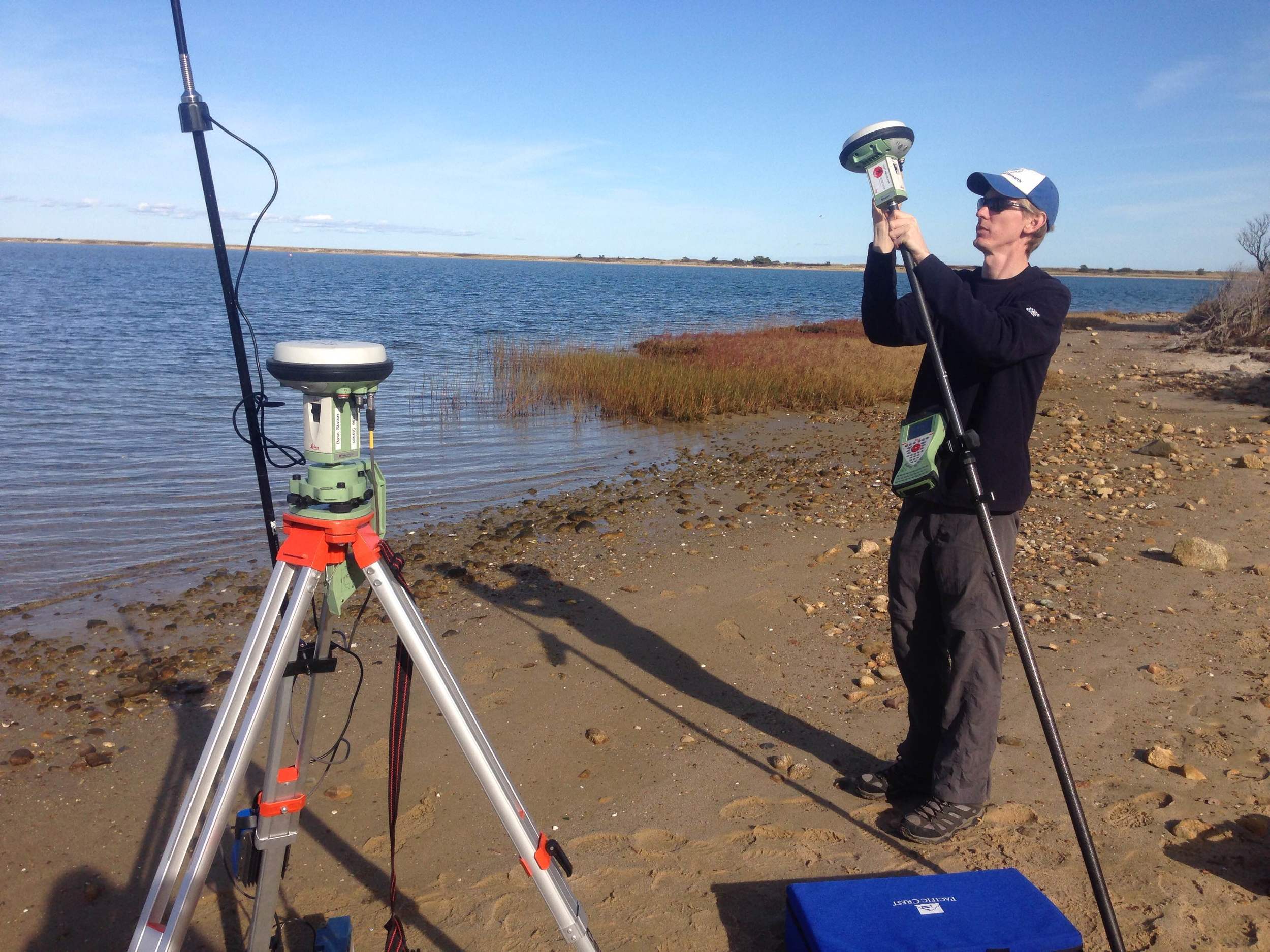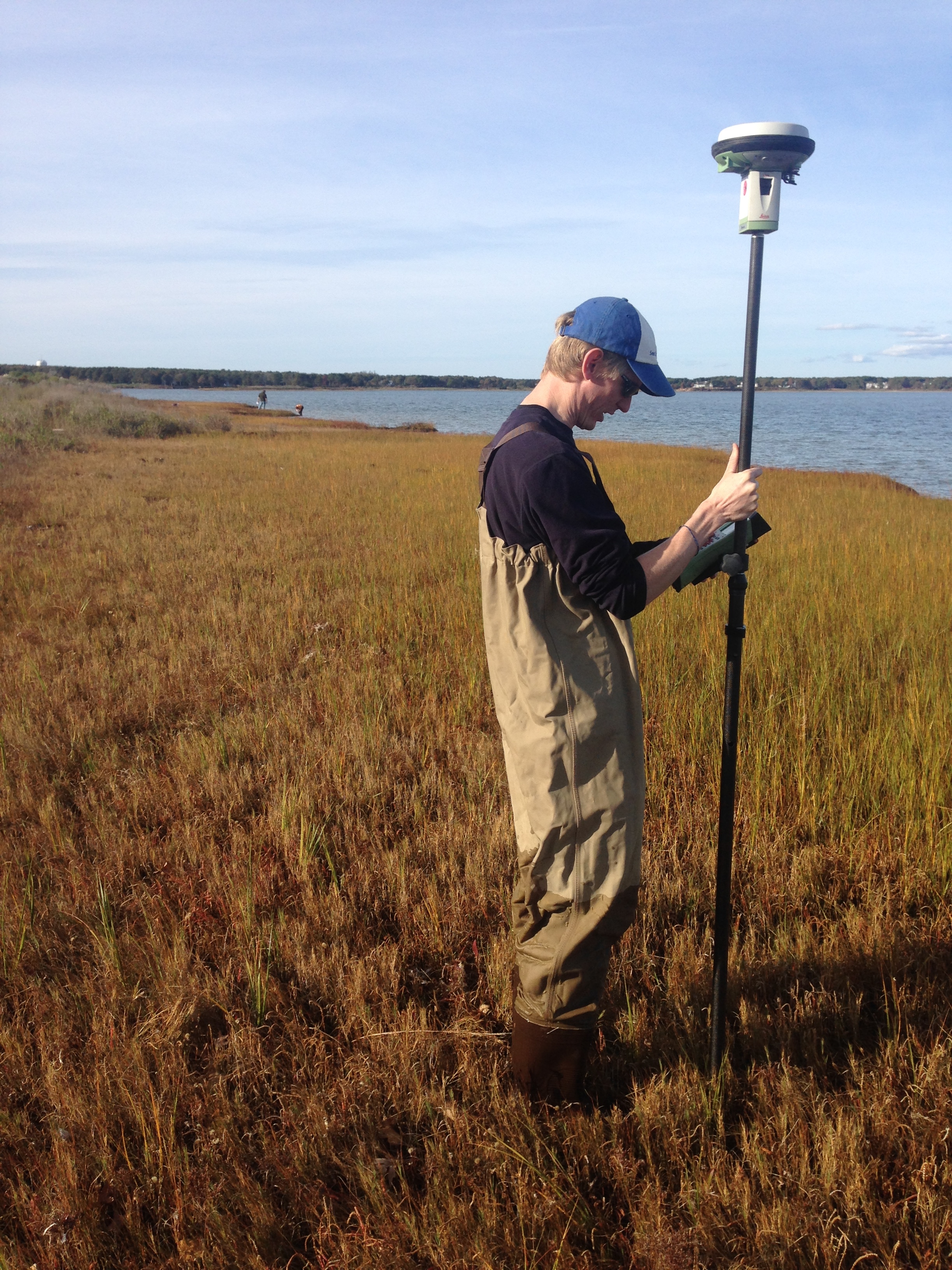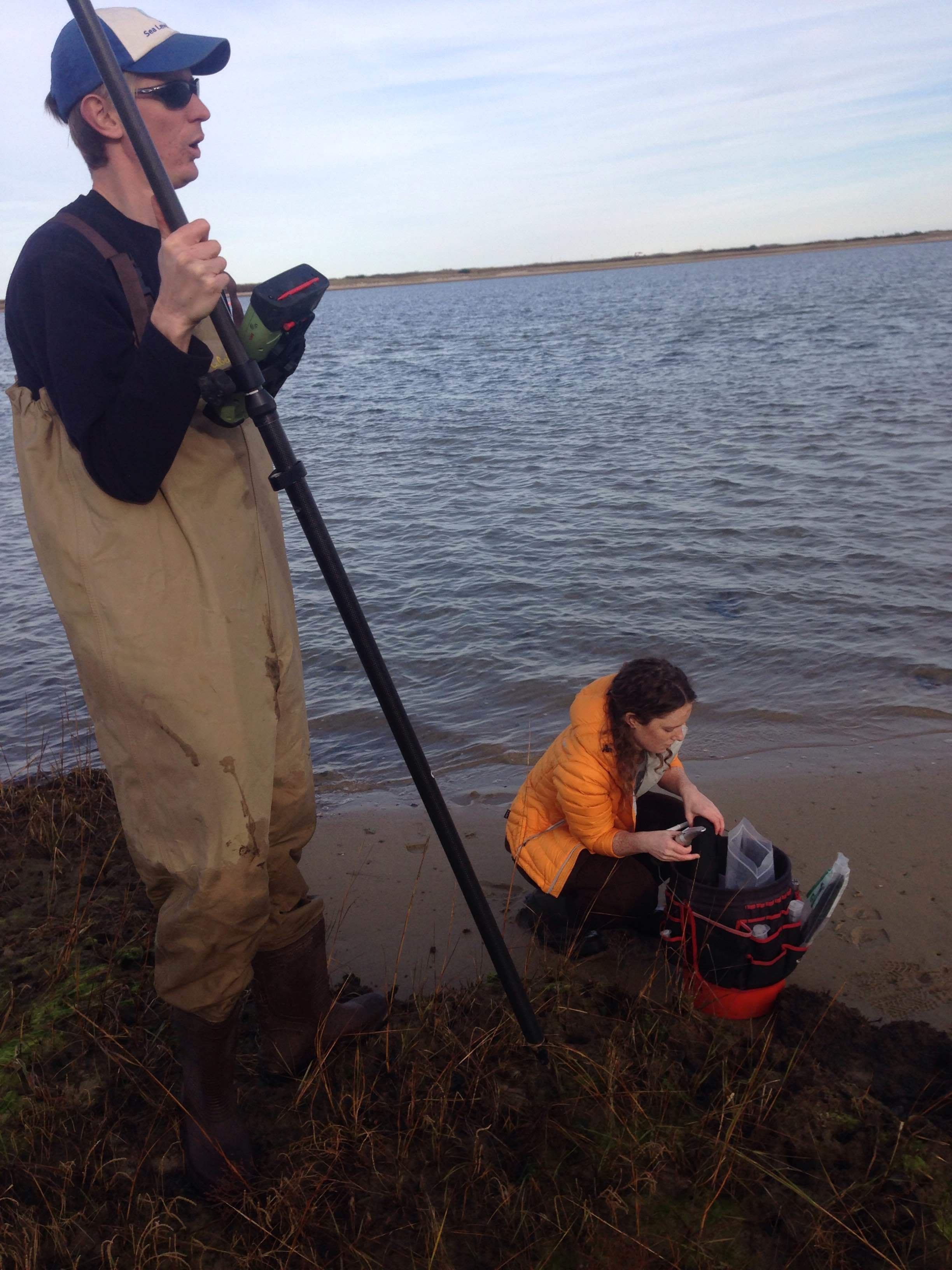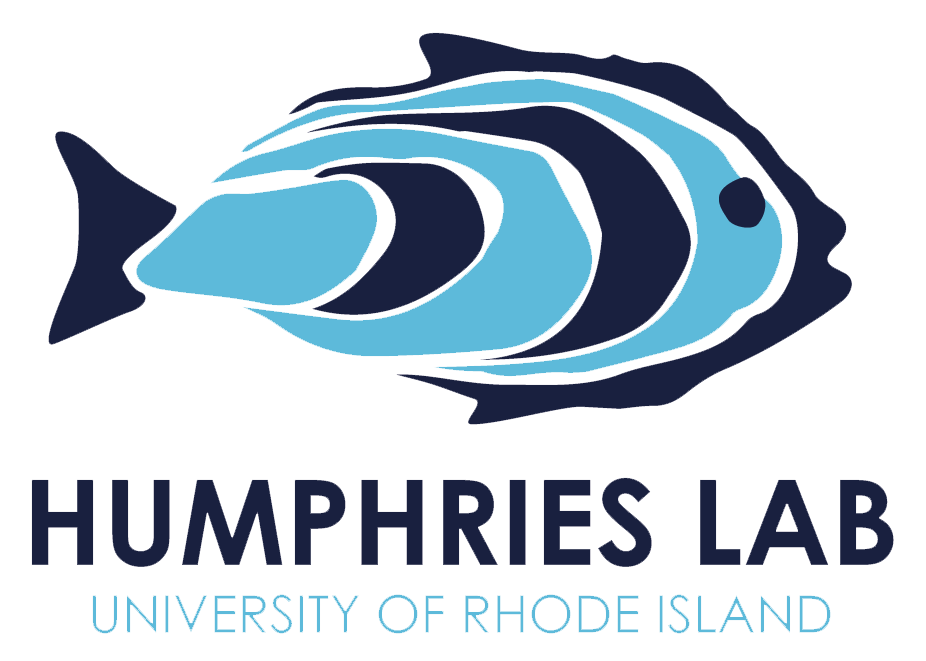This week was the lab’s first trip to Martha’s Vineyard for some preliminary sampling at Sengekontacket Pond. The pond is the future site of a living shorelines/salt marsh restoration project to be installed along the shores of Mass Audubon’s Felix Neck Wildlife Sanctuary. While on the island, we met with collaborators Dave Grunden, shellfish constable of Oak Bluffs, and Suzan Bellincampi, director of the wildlife sanctuary, to talk procedure for the restoration project’s expected installation in the spring of 2016. The meeting also produced some exciting brainstorming around a specific segment of the project, which will incorporate visitors to the sanctuary to investigate links between education and outreach and restoration project support. Current Humphries Lab master’s student, Lauren Josephs, will undertake this portion of the project as her graduate thesis work.
We were also incredibly grateful to have fellow URI professor Simon Engelhart along to help us in obtaining a baseline profile of the shoreline using Real-Time Kinematics (RTK) GPS. The trip marked an exciting step forward for the project, not to mention some unseasonably perfect weather.
